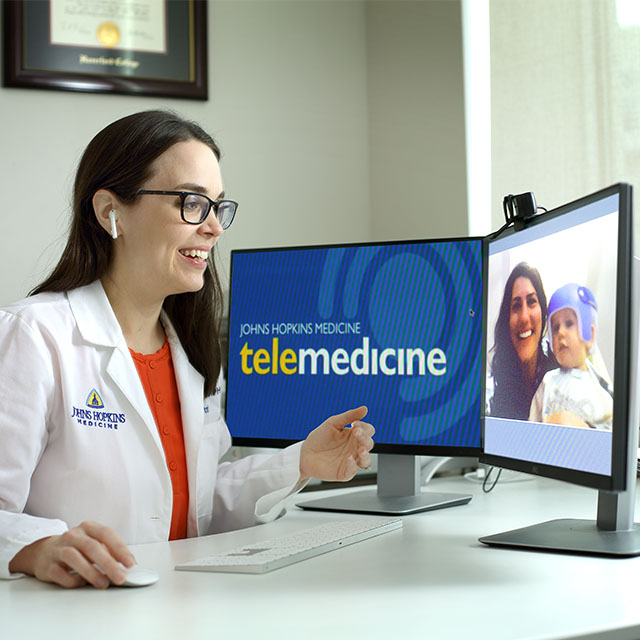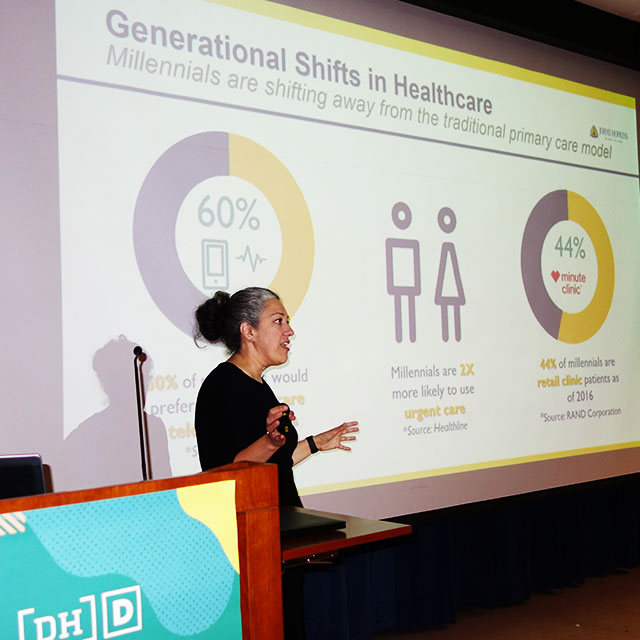With the help of telepresence robots, busy executives can tour a factory halfway across the country, and doctors can make virtual rounds at a clinic located hundreds of miles away. Now the same technology is helping critically ill and injured children at the Johns Hopkins Children’s Center escape for a day of fun at the National Aquarium without leaving their hospital beds.
Working with Johns Hopkins Telemedicine, second-year medical students Galen Shi and Pavan Shah oversee these virtual outings from the Children’s Center. For half an hour at a time, children ages 5 to 18 have the opportunity to learn about blacktip reef sharks, Atlantic stingrays, horseshoe crabs and many other underwater creatures. “The telepresence robots really break down the walls and help distract the kids,” says Shi. “Through the robot, the [kids] can have fun outside of the hospital.”
Shi started this program, entitled WeGo Foundation, in 2016 after he completed an internship with a company testing telepresence robots in health care. Patients at the Children’s Center use a robot named RAE — short for Remote Aquarium Explorer — that is stationed at the National Aquarium. RAE’s stick figurelike body is a sturdy, 3-foot-tall stand connected to a base with four wheels. Its head is a tablet-sized screen with a built-in camera, speaker and microphone.
Hospital patients use a laptop and special software to drive the robot, like a remote-controlled car, on a virtual trip through the aquarium. While they experience real-time sights and sounds, aquarium visitors can also see and hear them via the robot’s screen and speakers.
“Time and time again, we see kids make friends with other kids,” says Shah. “Sometimes, the kids aren’t interested in the aquarium and spend all their time chatting with the friends they make.”
The WeGo Foundation targets patients who have been in the hospital for weeks, perhaps months, for a variety of reasons, such as waiting for a heart transplant or adapting to life in a wheelchair after severe injury. One mother said the aquarium trip was the most she had seen her child smile since he had been in the hospital, Shi says. Another parent said she and her daughter loved having a way to get out of the room.
Currently, the program has three robots — two were donated, and one is borrowed — and also operates in the University of Maryland Children’s Hospital and Mt. Washington Pediatric Hospital. In addition to visiting the aquarium, the robots have already taken patients on virtual trips to the Maryland Science Center and to theater productions at Baltimore Center Stage.

